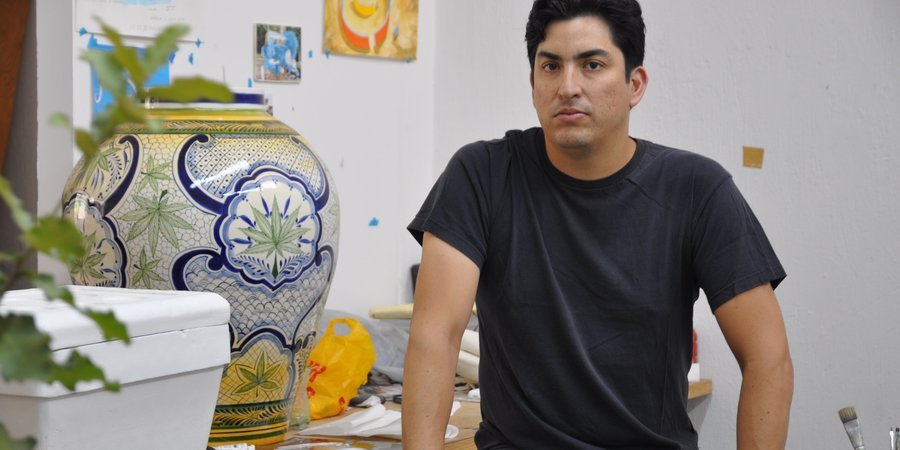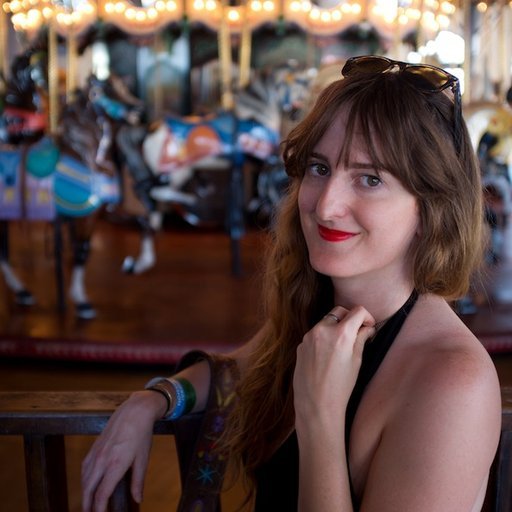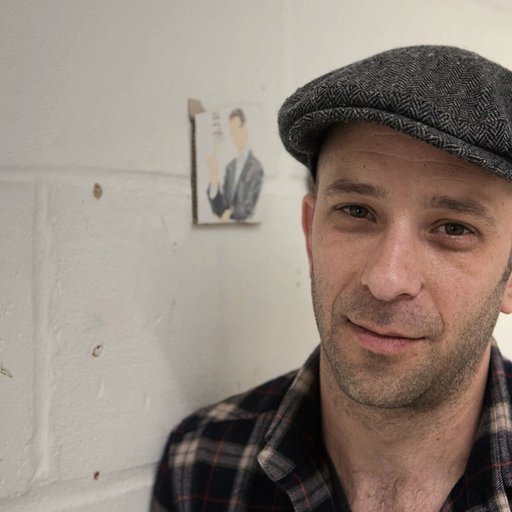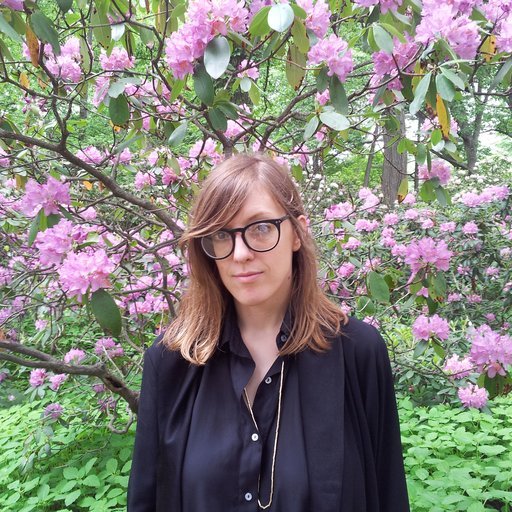Looking at Eduardo Sarabia's blue-and-white ceramic pottery, what one first notices is that the vessels appear to banal touristy collectibles—but then images of naked women, drugs, and guns suddenly appear out of the traditional Mexican designs that border them. Naturally, sex, drugs, and violence will be provocative in an artwork, but Sarabia's ceramics aim to do more than just titillate. They also expose Mexico's dark subculture—the bloody lore of violence-torn places like Ciudad Juarez—while simultaneously playing on ideas of smuggling as an entrepreneurial means of crossing borders. We spoke with Sarabia about his racy pottery, why he made a tequila bar for the 2008 Whitney Biennial, and why he has contacted gang members for inspiration.
You’re probably best known for your blue-and-white ceramics, which are done in the manner of Mexican tourist items but are decorated with a more sinister iconography. You paint marijuana leaves, guns, and naked girls onto the ceramics, and they seem to have a clear relationship to Mexico's underground industry of narcotics trafficking. What themes are you exploring by taking on these issues?
The ceramics are based on typical talavera designs, which are traditional Mexican patterns that are used for pottery. Talavera designs are just something that’s embedded in Mexican culture and typical of Mexican households. When I first started working with this, I was really involved in researching this other side of Mexican culture, and the way that drug-war imagery had become such a deeply embedded piece of that culture. People in Mexico shy away from it. They don’t really mention it, but it’s so present, such a part of daily life. Often, it's just the economics of the drug trade that are really evident. I wanted to make something that represented that. I always describe the ceramics as being something my grandma or my mom could like and easily understand, and something they could relate to by having those old ceramic plates hanging on their wall, but with these more contemporary Mexican images.
You exhibit the ceramics in an unusual way. They’re sometimes in a Walmart-style showroom, or sometimes they are on boxes that advertise products. Can you talk a little about your approach for exhibiting them?
Sending these pieces [by mail] could be taken as something illegal, or something more taboo. That gives it this life, this theater where it looks like it’s something you’re not supposed to have, but you have it. It’s like something discarded but displayed—something that’s ready to be shipped or packed at a moment’s notice, but it’s precious at the same time. You really want to take care of the ceramics. I like the combination between the box and the piece in that regard. However, it could also be taken as a reference to Pop Art and Andy Warhol’s boxes. Most of the brands or labels that I use have something to do with something that looks a little bit sketchy. You’re not really sure about it, but something looks a little off. It’s just a little too Pop. You’re like, “What is this?” You get standoffish.
In addition to representing Mexican culture, the ceramics also feel reminiscent of Delftware. Is there any connection between luxury items and mass produced pottery in your work?
I think there is. Working in this style in Mexico was really specific until I started showing the ceramics in other places, like Moscow, Istanbul, China, and Japan. Everyone seems to have some kind of history related to this blue-and-white pottery, so different countries have different connections to this blue-and-white style. Even though I feel like the imagery is specific to what’s going on Mexico, other places seem to understand it. They relate it to their own history and their own country’s struggles. There’s a lot of connections that I really like. I sometimes think about history here. This style of blue-and-white pottery broke out of Istanbul, then came into Asia, then went into the Americas and Europe. There’s definitely a source where this all comes from, and everyone adapted it to their own stoneware and their local materials.
There is a surprising lack of men on your ceramics. Why is there such a huge emphasis on women here?
I like to draw naked girls. That’s the honest truth. I think it’s kind of boyish, but I feel like trying to interpret what a drug-lord kingpin might want if he commissioned the pottery. I try to actually get people I know in these shady businesses to take some interest in my work, but they always shy away from it. Maybe it calls too much attention to what they do, or maybe it reflects something that they don’t want reflected onto themselves. Either way, the ceramics are a mix of what I imagine and what could represent this imaginary drug culture, or an imaginary drug cartel. I did try making one of a man one time. I drew a guy smoking a joint. It was kind of funny, but I always go back to the drug paraphernalia, the weapons, and the girls.
How would you hope that viewers will react to these provocative ceramics?
Well, I like the idea that they inform you a little bit about what’s going on Mexico, with the drug war and all. It’s something that’s rarely talked about. More often, people only talk about the violence. There’s a lot of other cultural things of interest that are happening, even just with music and the interest that people take in this northern banda and ranchera music. The music talks about drug life, and everyone, from five-year-old kids to 80-year-old men, listens to it. It’s a really rare thing for that to happen. My parents don’t listen to the same kind of music that I do, but there’s a common romanticism to it that’s embedded.
That romanticism is a fiction. It’s all made up. But it’s interesting, because it does trigger all these emotions in people. I like that. Some people embrace it, some people are a little more disgusted. And I like that people always have to do these double takes. The surprise element is probably what I enjoy most.
You were born in Los Angeles, but your work seems to primarily address Mexican culture. What are your personal ties to Mexico? How have they informed your art?
My parents are Mexican, and I’m a first-generation American. I grew up in a Mexican neighborhood in Los Angeles. I think there’s a real difference between Mexicans in the United States and Mexicans in Mexico. Growing up Mexican in Los Angeles is very unique. I had an interesting upbringing. I grew up in a bad neighborhood. There were gangs and other bad elements, but I was always more connected to school. I was the nerd and the president of the chess team. That kept me away from trouble, but all my friends were in gangs. They were getting shot, dying, and overdosing. It was unfortunately just a normal way of living. That began my interest in the gang subculture and this romanticism of belonging to something.
When I moved to Mexico, it was completely different. Living there was something I just didn’t understand at first. I spoke little Spanish, and I was always “the American” when I was in Mexico, whereas I was always “the Mexican” when I was in America. So it was interesting to see that change, and it was also interesting to see my family history. I went to visit my grandparents, and I did a project with my grandfather. He spent most of his life looking for buried treasure, so I wanted to connect with him and bond with him. Ten years ago, I went to Guadalajara to work on a project. The next day, I met this nice Mexican woman, and that was it. So I have a personal connection to Mexico as well.
Is there any relationship between your art and smuggling items across borders?
I do take an interest in these small border economies. Some of those economies are related to smuggling. I once did a tequila project called Salon Aleman, where I wanted to make my own tequila and open a bar in Berlin. I had no idea how to make a tequila company, or how to register it, make licensed bottles, and have it USDA approved. I ended up working with these border people to help me get things across the border between Mexico and the U.S.
You performed Salon Aleman as part of the 2008 Whitney Biennial. What was different about when you performed it in New York?
In Berlin, the bar became a hub for artists and travelers. They could link up with other people there. It was a really cool project, but I only had the space for the year. As soon as the year was up, I got invited to do the Whitney Biennial. I did the installation in the museum, and then I did five nights of Salon Aleman at the Park Avenue Armory. In Berlin, the idea was to always have creative people and artists and to do performances and events that people didn’t expect. In New York, I did that for five nights. It was really popular—everyone loved it. I got invited to keep doing it in other spaces, but I didn’t really do it that much. It was all good and fun, but I think it’s good to sometimes keep it as a memory. And I love that the people who went always tell me these crazy stories. They sometimes talk about they got really drunk and how fun it was. I like how it exists in that way, and I don’t necessarily want to keep replicating it.
You’ve done a series called Painting Memories, in which you paint splotches of color over paintings of photographs. When you do that, it forces the viewer to remember the details of that are hidden by paint. They almost feel like memories. How do past histories play into your work?
I have a tendency to misremember things. All my work is very personal, but when I start thinking about it and when it finally manifests itself, it always goes through some crazy filter where I don’t really remember what it was originally like. I play with the fictional elements because I don’t know if it’s real or not. When I started working on Painting Memories, it all made sense. I forced myself to recreate the story behind the image or recreate it. It could be interpreted in many different ways. There’s also something violent to it, with the splatters and the paint marks. But there’s also something beautiful, because of the color palette. The way it looks feels like being in some kind of dream. It’s that kind of imagination that I feel is one of my strong points.
Which photographs inspire the backgrounds of these paintings?
They’re based on photographs of family and friends that I take when I do research. At one point, I had so many photographs on the table in my studio that I just started using them as palettes. One day, it just became a project. I grew up going to arts conservatory courses since I was five years old, so I’m trained as a hyperrealist painter. I’ve never actually done that though. I think it’s cool, but as soon as I graduated from school and started working on other things, it just never became a part of my practice. But one day, it just clicked for me, how the hyperrealist painting could work as a background for some of the ceramic works and this series.
Which artists have inspired you the most?
I’m really good friends with a lot of artists—they’re the ones who inspire me. I get inspired every time I meet up with Anri Sala, who’s a good friend of mine. He does a lot of stuff, and he makes me want to do a lot of stuff. Marcel Dzama is also someone I like meeting up with and talking to. That energy from my friends makes me want to do projects. Seeing them doing work makes me want to have shows, too. As artists go, I really like Francis Alÿs.
Is there anything you collect yourself?
I do have a collection. Art has always been a big part of my life, and I like having art around my house. It's mostly based on trading with artists. I have Anri Sala and Marcel Dzama. I did a big trade with Damien Hirst last year, and he gave me some cool stuff. I also have a lot of Mexican artists’ work.
Are you working on anything now?
I’m director of an open studio project in Guadalajara that opened in the beginning of this month. I’ve also got a solo show opening on January 28 at the ASU Art Museum, and then I have a mid-career survey opening in May 2014 at Instituto Cabañas in Guadalajara, curated by Cesar Garcia. I’m a little bit busy.



























